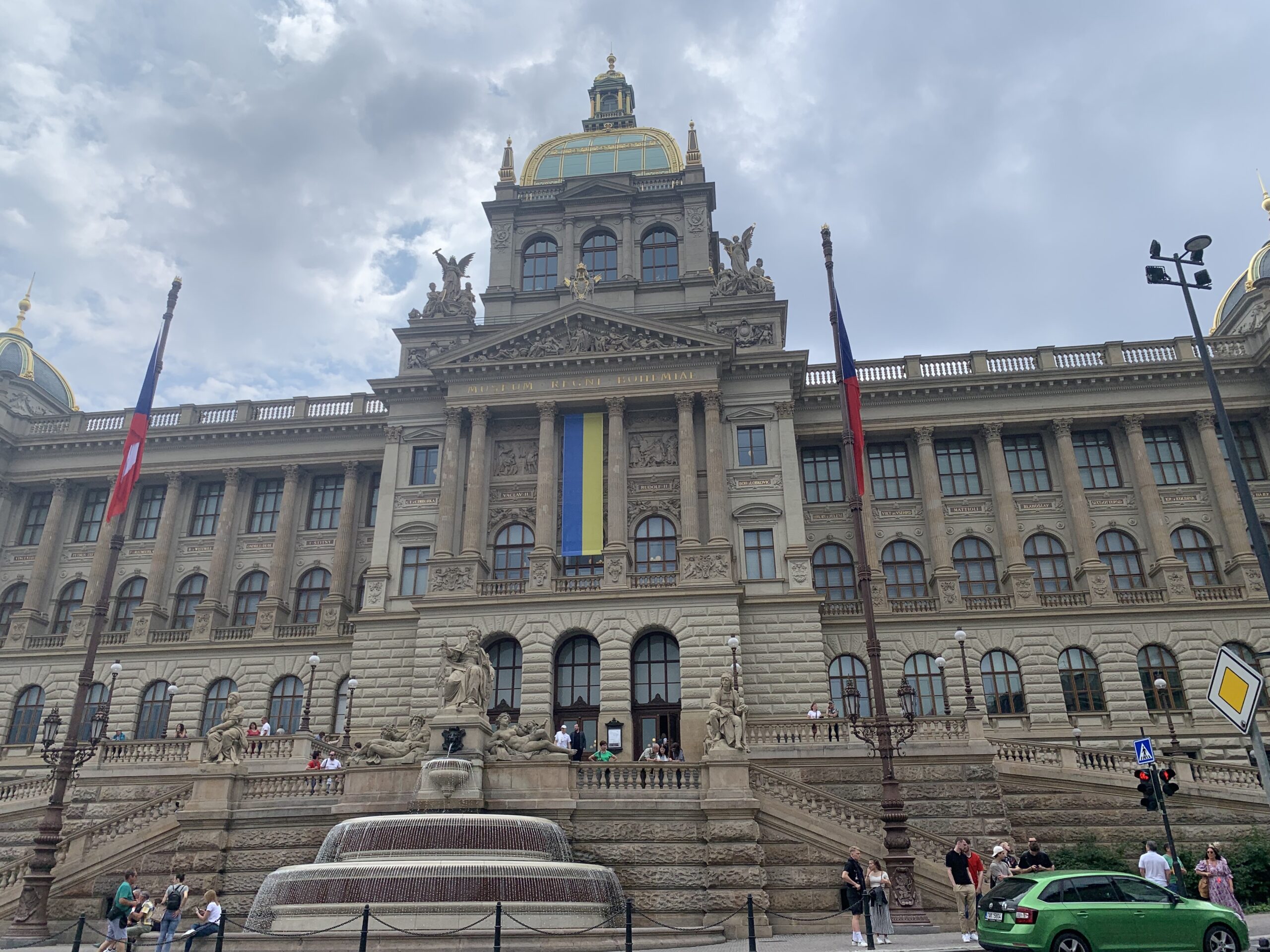
Standing With Ukraine
During one of my free exploration days outside of the classroom, I paid a visit to Prague’s National Museum, the largest museum in the Czech Republic, which holds an array of different exhibits exploring natural and social sciences. When I thought I explored all of its floors, I was surprised to discover an underground exhibition as I prepared to depart the museum. Stretching 50 meters, the art installation featured film and moving images depicting the conflict the Czech Republic faced in the 20th century, including the invasion of Hilter during World War II and the Soviet invasion following the Warsaw Pact. In drawing attention to the past, the artist called our attention to the present with flashing images of protests and clashes with police in riot gear.
As a U.S. American, I thankfully have not been harmed by the impacts of war. Yet, as an immigrant whose parents and grandparents saw the destruction of the Vietnam War, I hold my American identity with conflicted emotions. Months prior to arriving in Prague, I kept close attention on the war in Ukraine, anxious to understand the severity of the situation and how it would affect the Czech Republic. Every day, I heard news anchors and analysts discussing the war effort, the military aid, and reaction of Ukraine’s allies. Although I initially planned on focusing my attention towards exploring Prague and the Czech culture, I understood that I was in a unique position to also explore the effects of war on neighboring countries.
During my first two weeks in Prague, one of the most prevalent themes I noticed around the city was the public support of Ukraine. Regardless of which region of Prague I visited, I was met with some form of yellow and blue. At the National Museum’s entrance, the Ukrainian flag hangs facing the rest of Prague. In Old Town Square, Ukrainian flags flap in the wind alongside Czech flags. On the iconic Charles Bridge where the Bohemians defended against the Swede invaders in the Battle of Prague of 1648, tourists can read the stark message the city wants to send to Putin: HANDS OFF UKRAINE, PUTIN!
Following its release from Germany’s control after World War II, Czechoslovakia faced another invading force, the Soviets. Almost overnight and without bloodshed, the country was incorporated into the Soviet Union and into the system of communism during the Warsaw Pact Invasion of 1968. Under the directions of the Soviets, the Czech Communist Party censored dissenting opinions and restricted the teachings of certain periods of history among other actions. One of the significant events during that period was the Velvet Revolution, lasting from November 17 to December 29. On November 17, also known as International Students Day, students marched to honor the students killed during World War II. Though the students marched peacefully, police forces beat protesters on the streets, triggering public anger against the Communist Party.
At the art installation, I saw the faces of these student protesters, who were around my age at the time. Not only did I see their anger and frustration, I saw their passion and hope—the same passion and hope I saw in protests for the Ukraine people not too long ago. In understanding and respecting a host country as an American, I think that one of the most important things we can do is to understand the connections between the past and the present and how these connections shape the world around us.
